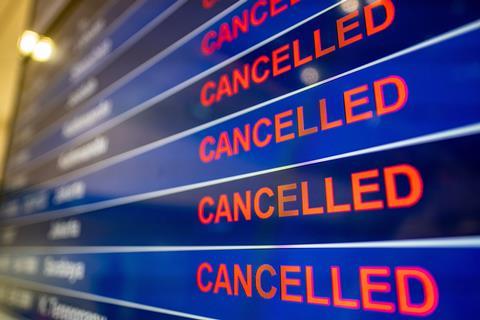The global IT outage on 19 July thrust the airline sector into the spotlight as carriers worldwide grappled with associated challenges.
As ever, air travel disruption is a rich source of headlines for news outlets, as images and footage of overcrowded airports and long queues provide ready-made visual representations of a problem neither caused by or unique to airlines.
Moreover, the economy-wide nature of the outage means few airlines will have avoided at least some impact, as businesses and service-providers – including airports and ground-handlers – across the aviation value chain were hit.
Timing is always significant with any kind of IT outage and in this case the incident came at a very busy time for travel in the northern hemisphere, with the peak summer holiday season in full swing.

But while, for example, American Airlines, Delta Air Lines and United Airlines all completely grounded flights overnight, the issues did not affect all airlines directly, and many around the world reported no technical challenges with their own systems.
And despite problems being widespread, with dozens of airports registering “excessive” delays, Cirium data for 17:00 Friday UK time suggests only around 4% of global flights had been cancelled on the day – or around 4,300.
With an IT fix from Crowdstrike being rolled out and flights resuming, the key issue now is how quickly the affected operators can get their operations working to schedule again. By late afternoon Friday UK time, there were indications that many affected carriers were in the process of doing just that.
Helpfully, airlines are used to dealing with short-term disruption, whether caused by technology issues, the weather or other factors, even if their responses are not always optimal.
Crew will be in the wrong places, manual processes will have temporarily replaced computer-based ones and many passengers will be left disappointed, overwhelming call centres and websites as they seek redress, but processes are in place to deal with those issues.
There will also inevitably be costs associated with the disruption – an impact that airlines will likely quantify come the third-quarter earnings season, although many will have the chance to offer their initial assessments during the current second-quarter earnings season.
Even for those whose operations are largely unscathed, the impact of other IT systems going down – including booking engines, for example – will be felt.
In terms of lessons from the incident, some will come from the implementation those aforementioned crisis-response processes again, and the day will inevitably bring lessons on the fragility and vulnerability of IT systems for a lot of businesses.
Ultimately, however, the economy-wide nature of the IT issue means airlines will not be alone in seeking answers to more fundamental questions that arise from this incident.
As long as the system recovery continues, those fundamental questions will likely be a talking point in the UK next week as the global aerospace industry gathers for the Farnborough air show.
